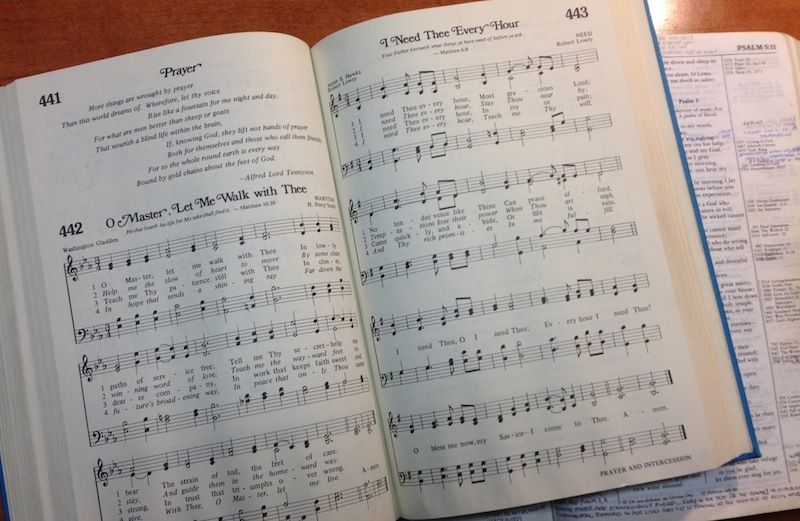Hymns and hymnals are disappearing from many churches nowadays. But hymns will always be an integral, daily part of my life due to my habit of using the hymnal as an aid to prayer.
Praying the hymnal is simple. It takes no practice and little preparation, yet it’s a singularly enriching practice. It will help you pray when you don’t know what to pray. It will help you express the deepest and highest longings of your heart in ways you may never have experienced otherwise.
It will fill your praying with rich phrases and stunning verses until, eventually, your memory will overflow with the lofty lyrics of history’s finest poets even when you’re not reading from the printed page.
Just a few simple suggestions will get you started in the practice of praying the hymnal:
1. Speak the hymn instead of singing it, especially at first.
Resist the temptation to sing. It may be hard at first if you know the hymn, but speaking it helps it become more of a prayer than a piece of music. And many fine hymns you’ve never sung can be added to your prayer repertoire, since not knowing the melody may actually be an advantage.
2. Choose hymns that are prayers themselves, hymns that speak directly to God.
Not all hymns are prayers, of course. Some teach, some testify, some inspire. But hymns that are written as prayers (“Have Thine Own Way,” “O Love That Wilt Not Let Me Go” and “Take My Life and Let It Be”) need no revision or adaptation.
3. Adapt the hymn’s wording to make it more personal or applicable to you.
Change the “thees” and “thines” of some hymns to “you” and “yours,” and (maybe) corporate language (“our” and “us”) to singular (“my” and “me”).
4. Focus your heart and mind on what the hymn is saying.
Some people struggle to sincerely pray written words because they have trouble turning words on a page into the prayer of their hearts. It does take concentration but forget the line breaks and rhymes and focus on what the words are saying.
5. Feel free to amplify or meditate on specific lines or words in the hymn.
Praying a hymn can be just the beginning of prayer if you give yourself permission to dig deeper into the sentiment the hymn has helped you express.
6. Pay special attention to hymns that rephrase Scripture.
Many hymns are based on Scripture, but some are Scripture in verse: “The King of Love My Shepherd Is” (Psalm 23), “As Pants the Hart for Cooling Streams” (Psalm 42), and “Bless the Lord, O My Soul” (Psalm 103:1), to name a few.
Add your own flourishes to these suggestions and your praying will soon be music to God’s ears.






